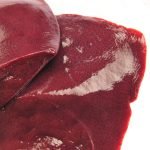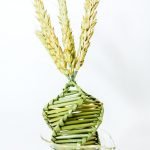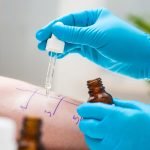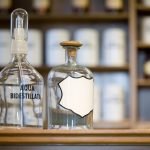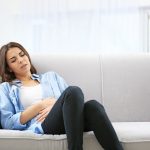Regenerative Joint Injections: An Introduction
Regenerative Medicine
Fred G. Arnold, DC, NMD
A little over 10 years ago, the new “buzz word” in medicine was “Anti-Aging Medicine.” Today, Regenerative Medicine is a popular and rapidly expanding field of medicine. This is the first in a series of articles to address this amazing specialty.
Regenerative Medicine is a specialized treatment branch of orthopedics. By definition, Orthopedic Medicine is concerned with the correction or prevention of deformities, disorders, or injuries of the skeleton and associated structures (such as tendons, ligaments, and cartilage).1 Regenerative Medicine may be defined as the process of replacing, or “regenerating,” human cells, tissues, or organs, to restore normal function.2 Within the practice of orthopedics, orthobiologics are biological substances that naturally occur in the body and are used exogenously to help injuries heal more quickly, such as fractures and injured muscles, tendons, and ligaments.3
Types of Regenerative Joint Injections
Regenerative joint injections are comprised of 3 types, classified by levels: Levels 1, 2, and 3.
Level 1
Level-1 regenerative joint injections are usually considered initial treatments, and may be used in combination with other regenerative joint injections.
Prolotherapy
Prolotherapy is probably the oldest form of regenerative medicine. It is a recognized nonsurgical procedure that stimulates the body’s natural healing processes to strengthen joints weakened by trauma or arthritis.4 The injection solution used for prolotherapy has changed over the decades since prolotherapy was first administered in the 1930s.5 A solution commonly used today is a mixture of dextrose (sugar solution), lidocaine (anesthetic), and vitamin B12.4 In an early study, published in the Journal of Neurological and Orthopedic Medicine and Surgery, the authors write, “It is possible to induce proliferation of collagen in human ligaments using prolotherapy. The tissue that proliferates is a dense collagen and is associated with a reduction in pain. Mechanical back pain can be relieved by this method and other compensatory injuries prevented.”4
Prolozone
Prolozone Therapy is a regenerative pain treatment developed by Frank Shallenberger, MD, in the 1990s.6 According to Dr Shallenberger, “Prolozone is a technique that combines the principles of Neural Therapy, Prolotherapy and Ozone Therapy. It involves injecting combinations of procaine, anti-inflammatory medications, homeopathics, vitamins, minerals, proliferatives and ozone/oxygen gas into degenerated or injured joints or areas of pain.”6
Perineural Injections
The technique of perineural injections was developed by John Lyftogt, MD.7 It was previously known as Neural Therapy. Perineural Injection Therapy combines the treatment principles of both Neural Therapy and Prolotherapy. Like Neural Therapy, shallow, subcutaneous injections are injected along the path of superficial nerves; like Prolotherapy, dextrose (a sugar solution) is used. Dr Lyftogt has demonstrated a reduction in pain when superficial nerves deficient in glucose are injected with glucose. He calls this “gluconeuropenia.” Perineural Injection Therapy “is a simple office procedure, easily done without imaging, and may lead to relief from neuropathic pain.”7
Level 2
Level 2 is compromised of Platelet-Rich Plasma (PRP), which is a popular regenerative joint treatment. Depending on the condition, PRP may be given alone or in combination with other treatments.
Platelet-Rich Plasma
The healing properties of PRP therapy are attributed to an increased concentration of growth factors and secretory proteins that enhance the healing process on a cellular level.8 The PRP method involves the collection of a small sample of the patient’s own blood, which is centrifuged to separate the platelets from other cells in the blood, such as red and white blood cells. These concentrated platelets are then injected at specific sites. In an article published in the Clinical Journal of Sports Medicine, the authors write, “PRP use in tendon and ligament injuries has several potential advantages, including faster recovery and, possibly, a reduction in recurrence, with no adverse reactions described.”8
Level 3
Level-3 regenerative joint injections represent some of the field’s most recent advancements. All of these injections involve an orthobiologic solution that may be used alone or in combination with 1 or more other regenerative joint solutions.
Bone Marrow Aspirate Concentrate (BMAC)
BMAC is an orthobiologic tissue used to treat painful musculoskeletal conditions.9 Bone marrow stem cells are extracted from the hip of the patient after administering a local anesthetic so that the patient experiences the least amount of pain and discomfort. These are true adult mesenchymal stem cells, and are independent of age or osteoarthritis.9
These cells can be used in clinical practice along with PRP and/or other treatments to optimize musculoskeletal tissue regeneration. According to the authors of a recent study, “BMAC-PRP improved pain and shoulder function in patients with partial tear of the rotator cuff tendon.”10 And a 2-year clinical study of knees treated with a combination of BMAC and PRP demonstrated improved subjective clinical outcomes and significantly improved cartilage repair from baseline.11
Amniotic Tissue
This orthobiologic tissue has been shown to reduce inflammation, promote regeneration, and provide a structural matrix for BMAC and PRP. Amniotic tissue proteins act as an anchor for the patient’s own cells, serving as a scaffold for tissue reconstruction.
Amniotic tissue should not be considered a true stem-cell therapy, since it is unclear just how many actual living mesenchymal stem cells (MSCs) exist in this tissue and act as MSCs. In a recent study, published in the American Journal of Sports Medicine, the authors evaluated 3 commercial amniotic fluid products and could not identify any living mesenchymal stem cells.12 However, the authors concluded, “Given their growth factor content, … amniotic tissue may still represent a promising tool for orthopaedic treatment.” Amniotic tissue can be used independently or in combination with other treatments to maximize treatment outcome.
Alpha-2-Macroglobulin (A2M)
In the treatment of osteoarthritis (OA), this orthobiologic molecule reduces inflammation and blocks the breakdown of cartilage. In a study published in Arthritis and Rheumatology, treatment of cultured OA cartilage cells with A2M decreased inflammatory cytokines and inhibited cartilage degradation.13 These molecules are naturally found in the patient’s own blood and are gathered through a specialized filtration system. They can be easily used in conjunction with PRP, since the A2M molecules are found in the serum collected during the PRP procedure. Combining A2M with PRP produces a stronger regenerative medicine treatment.
Exosomes
Exosomes, another orthobiologic, constitutes one of the newest forms of regenerative medicine. Exosomes are derived from MSCs and have similar functions as MSCs, such as repairing tissue damage, suppressing inflammatory responses, and modulating the immune system.14 The authors of a recent rat study concluded that exosomes “promoted cartilage repair and chondrocyte proliferation … which might be an underlying therapeutic target for OA.”14 In another study, which examined the effect of exosomes on cultured human chondrocytes, exosomes promoted cartilage proliferation and inhibited cartilage degradation.15 These authors state that exosomes “exhibit potential as a disease-modifying osteoarthritis drug” due to their therapeutic effects on a protein involved in OA pathogenesis.15 Exosomes play an important role in cell-to-cell communication and exert positive effects on regeneration in many tissues.
Table 1a. Summary of Regenerative Joint Injections
| LEVEL 1 | |||
| Prolotherapy | Prolozone | Perineural Injections | |
| Solutions | Dextrose, lidocaine, & B12 | Vitamin/mineral solution & ozone | |
| Areas treated | All joints | All joints | Peripheral nerves |
| Living Cells | No | No | No |
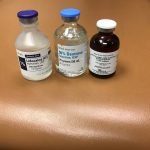 Prolotherapy solution Prolotherapy solution |
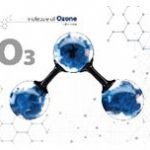 Ozone molecule Ozone molecule |
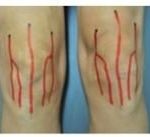 Peripheral nerves Peripheral nerves |
|
| LEVEL 2 | |||
| Platelet-Rich Plasma (PRP) | |||
| Solution | Platelets from patient’s own blood | ||
| Areas treated | All joints | ||
| Living cells | Yes | ||
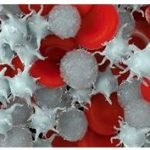 Orthobiologic Orthobiologic |
|||
Table 1b. Summary of Regenerative Joint Injections
| LEVEL 3 | ||||
| Bone Marrow Aspirate Concentrate (BMAC) | Amniotic Tissue | Alpha-2-Macro-globulin (A2M) | Exosomes | |
| Solution | Autologous (self) stem cells from the patient’s hip | Non-living cells from placenta | Autologous protein in patient’s blood | Secreted by stem cells |
| Areas treated | All joints | All joints | All joints | All joints |
| Living cells | Yes | No | No | No |
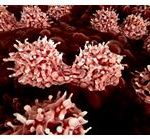 Orthobiologic Orthobiologic |
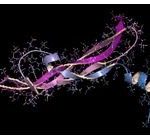 Orthobiologic Orthobiologic |
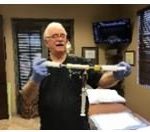 Orthobiologic Orthobiologic |
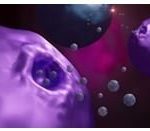 Orthobiologic Orthobiologic |
|
Table 2. Some Common Conditions Treated with Regenerative Joint Injections
| Achilles tear | Hip pain & arthritis | Rotator cuff tears |
| Achilles tendonitis | Joint laxity | Rotator cuff tendonitis |
| Ankle pain & arthritis | Knee ligament injuries | Sacroiliac joint pain |
| Ankle sprains | Knee pain & arthritis | Sciatica |
| Cartilage damage | Knee tendonitis | Shoulder pain & arthritis |
| Cervical radiculitis | Ligament tears | Tendonitis |
| Elbow pain & arthritis | Low back pain | Tennis elbow (lateral epicondylitis) |
| Elbow tendonitis | Neck pain | Thoracic pain |
| Foot pain & arthritis | Patellar tendonitis | Wrist pain & arthritis |
| Golfer’s elbow (medial epicondylitis) | Pelvic pain | |
| Hand pain & arthritis | Plantar fasciitis |
Conclusion
The field of Regenerative Medicine is rapidly expanding with many different types of regenerative medicine treatments. Prolotherapy is the oldest form of Regenerative Medicine, and Orthobiologics represents the newest category of regenerative medicine treatments. For clarification purposes, the different forms of Regenerative Medicine may be divided into: Level 1 (ie, prolotherapy, prolozone, perineural injections); Level 2 (ie, platelet-rich plasma); and Level 3 (ie, bone marrow aspirate concentrate, or stem cells), amniotic tissue, α2-macroglobulin, and exosomes). Any of these different injection solutions may be administered individually or in combination. All of the different procedures have been shown to provide benefit and promote regeneration of tissues. The determination of the best individual or combination solution is made on a case-by-case basis and is a doctor-and-patient decision. The patient should always have input as to the type of regenerative solution used for his or her treatment. The common underlying element of all injection solutions is that they all provide benefit and are regenerative.
References:
- Merriam Webster Dictionary. Orthopedics. Available at: www.merriam-webster.com/dictionary/orthopedics. Accessed September 24, 2019.
- Advancing Transfusion and Cellular Therapies Worldwide. Regenerative Medicine. AABB Web site. www.aabb.org/aabbct/therapyfacts/Pages/regenerative.aspx. Accessed September 24, 2019.
- Singh AP. Orthobiologics – Types and Uses. Available at: https://boneandspine.com/orthobiologics-types-and-uses/. Accessed September 24, 2019.
- Schwartz RG, Sagedy N. Prolotherapy: A literature Review and Retrospective Study. The Journal of Neurological and Orthopedic Medicine and Surgery. 1991;12(3):1-5. Available at: https://www.getprolo.com/prolotherapy-a-literature-review-and-retrospective-study/. Accessed September 24, 2019.
- Hackett GS, Hemwall GA, Montgomery GA. Ligament and Tendon Relaxation: Treated by Prolotherapy. 5th Oak Park, IL: Beulah Land Press; 2002: xix, 13, 26-36.
- Shallenberger F. Prolozone™ – Regenerating Joints and Eliminating Pain. Journal of Prolotherapy. 2011;3(2):630-638. Available at: http://journalofprolotherapy.com/prolozone-regenerating-joints-and-eliminating-pain/. Accessed September 24, 2019.
- Conaway E, Browning B. Neural Prolotherapy for Neuralgia. Journal of Prolotherapy. 2014;6:e928-e931. Available at: http://journalofprolotherapy.com/neural-prolotherapy-neuralgia/. Accessed September 24, 2019.
- Taylor DW, Petrea M, Hendry M, Theodoropoloulos JS. A systematic review of the use of platelet-rich plasma in sports medicine as a new treatment of tendon and ligament injuries. Clin J Sport Med. 2011;21(4):344-352.
- Scharstuhl A, Schewe B, Benz K, et al. Chondrogenic potential of human adult mesenchymal stem cells is independent of age or osteoarthritis etiology. Stem Cells. 2007;25(12):3244-3251.
- Kim SJ, Kim EK, Kim SJ, Song DH. Effects of bone marrow aspirate concentrate and platelet-rich plasma on patients with partial tear of the rotator cuff tendon. J Orthop Surg Res. 2018;13(1):1.
- Hede K, Christensen BB, Jensen J, et al. Combined Bone Marrow Aspirate and Platelet-Rich Plasma for Cartilage Repair: Two-Year Clinical Results. Cartilage. 2019 Sept 20:19447603519876329. doi: 10.1177/1947603519876329. [Epub ahead of print]
- Panero AJ, Hirahara AM, Andersen WJ, et al. Are Amniotic Fluid Products Stem Cell Therapies? A Study of Amniotic Fluid Preparations for Mesenchymal Stem Cells With Bone Marrow Comparison. American J Sports Med. 2019;47(5):1230-1235.
- Wang S, Wei X, Zhou J, et al. Identification of α2-macroglobulin as a master inhibitor of cartilage-degrading factors that attenuates the progression of posttraumatic osteoarthritis. Arthritis Rheumatol. 2014;66(7):1843-1853.
- Liu Y, Zou R, Wang Z, et al. Exosomal KLF3-AS1 from hMSCs promoted cartilage repair and chondrocyte proliferation in osteoarthritis. Biochem J. 2018;475(22):3629-3638.
- Mao G, Zang Z, Hu S, et al. Exosomes derived from miR-92a-3p-overexpressing human mesenchymal stem cells enhance chondrogenesis and suppress cartilage degradation via targeting WNT5A. Stem Cell Res Ther. 2018;9(1):247.
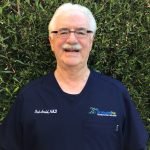 Fred G. Arnold, DC, NMD, specializes in Regenerative Joint Injections and has over 29 years of clinical experience. Dr Arnold is certified in prolotherapy by the American Association of Orthopedic Medicine (AAOM), and is also certified in chelation therapy. He is also a Fellow in both the Anti-Aging & Regenerative Medicine and the American Academy of Ozonotherapy (FAAOM). Dr Arnold has degrees in both naturopathic medicine and chiropractic.
Fred G. Arnold, DC, NMD, specializes in Regenerative Joint Injections and has over 29 years of clinical experience. Dr Arnold is certified in prolotherapy by the American Association of Orthopedic Medicine (AAOM), and is also certified in chelation therapy. He is also a Fellow in both the Anti-Aging & Regenerative Medicine and the American Academy of Ozonotherapy (FAAOM). Dr Arnold has degrees in both naturopathic medicine and chiropractic.




